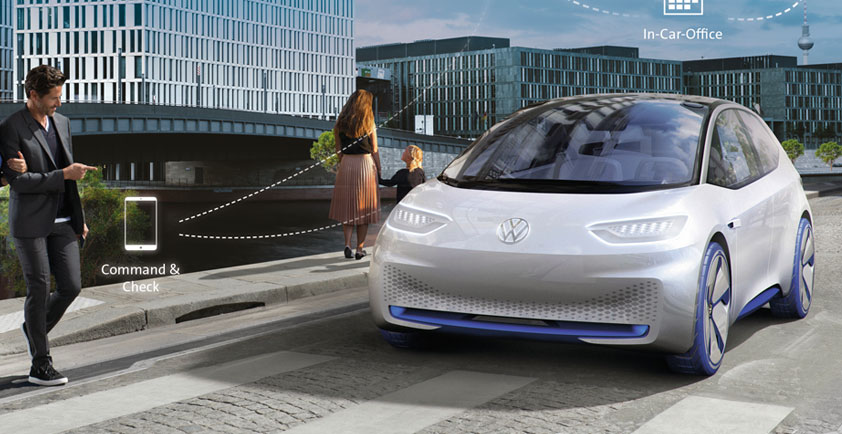

TOMTOM NAVIGATION INTEGRATED WITH MICROSOFT CONNECTED VEHICLE PLATFORM
IAA Frankfurt, Germany - TomTom (TOM2) today revealed that its navigation has been integrated with the Microsoft Connected Vehicle Platform. Navigation usage and diagnostics data can be sent from vehicles to Microsoft Azure where the data can be used by automakers to generate data-driven insights to deliver tailored services and to make better informed design and engineering decisions. The location intelligence – which also includes traffic information and HD map services – can also be used in vehicles for navigation apps, as well as context while driving autonomously.
Cees van Dok, Chief Product Officer, TomTom, explains: “Our integration with the Microsoft Connected Vehicle Platform means that automakers can get access to precise and reliable navigation and driving behaviour data easily, while of course adhering to privacy principles. This data could, for instance, be used to predict the range of an electric vehicle based on driving behaviour and planned route more accurately; or to work out, based on navigation behaviour, what connectivity package for online navigation would be best suited for a driver. This is a game changer for OEMs.”
In December 2016, TomTom made its location-based services available on Azure, and in February 2019, the two firms announced that TomTom had been chosen as the location data provider for mapping services across Microsoft solutions, including Azure Maps, Bing, Cortana, Windows and future offerings.
Tara Prakriya, Partner Group Program Manager of Microsoft Connected Vehicle Platform and Mobility at Microsoft comments: “With Microsoft Connected Vehicle Platform serving as the digital chassis of the car, telematics, infotainment, and data from sensors are all connected to the cloud in the same way, effectively solving the pain point of managing different systems for scale, security, and reliability. We’re delighted to add navigation intelligence data from TomTom to MCVP.”


TOMTOM EXPANDS PARTNERSHIP WITH MICROSOFT TO POWER MICROSOFT CLOUD OFFERINGS WITH LOCATION-BASED SERVICES
TomTom selects Microsoft Azure as its preferred cloud provider; TomTom location-based services will be utilized across Microsoft technologies for cloud services including Microsoft Azure, Bing Maps and Cortana
AMSTERDAM and REDMOND, Wash. — TomTom (TOM2) and Microsoft Corp. today announced that they are expanding their partnership, bringing TomTom’s maps and traffic data into a multitude of mapping scenarios across Microsoft’s cloud services. With this broadened integration, TomTom will be a leading location data provider for Microsoft Azure and Bing Maps. TomTom is also expanding its relationship with Microsoft, selecting Microsoft Azure as its preferred cloud provider.
Azure Maps delivers secured location APIs to provide geospatial context to data. The Azure Maps service enhances the value of the Microsoft Azure cloud platform that is helping enterprises and developers create IoT, mobility, logistics and asset tracking solutions. TomTom providing their map data and services is a significant component for completing these enterprise customer scenarios.
Anders Truelsen, Managing Director, TomTom Enterprise said, “TomTom is proud of the relationship we’ve built with Microsoft to offer Microsoft Azure customers access to build location-aware applications and look forward to deepening that relationship as we extend our high-quality location technologies to an even larger audience base. We’re excited to be chosen as the location data provider to power mapping services across all of Microsoft, including Bing, Cortana, Windows and many other leading products and the innovations that will come forward in this continued relationship.”
“This deep partnership with TomTom is very different from anything Microsoft has done in maps before,” said Tara Prakriya, Partner Group Program Manager of Azure Maps and Connected Vehicles. “TomTom hosting their services in the Azure cloud brings with it their graph of map data. Manufacturing maps in Azure reduces the latency to customer applications, ensuring we offer the freshest data through Azure Maps. Azure customers across industries end up winning when their geospatial data and analytics, TomTom data, and Azure Maps services are all running together in the same cloud.”
Azure Maps lights up a multitude of location scenarios for Microsoft. Azure customers now have native support ranging from building map-based dashboards to visualize IoT spatial analytics to mobility scenarios for vehicle movement. For example, in agriculture, customers can easily track utilization of farm sensors for crops, livestock, tractors and more to optimize production. Using the Azure Maps routing services powered by TomTom allows for insightful distribution of goods originating from farmlands to retail, restaurants and home delivery. Using the freshest maps and traffic information can determine delivery range, optimize delivery routes and provide customer insights into delivery status.
TomTom providing the freshest map and traffic information in combination with Azure Maps services and SDKs will help perpetuate improved smart city applications. Azure Maps SDKs using TomTom services make it simple to render a multitude of data sets from a variety of sources – such as real-time parking meter rates, street-specific traffic, addressing carbon footprint, reducing noise pollution and more in a consolidated, map-based application for visualization of pertinent city information crucial to its citizens.













